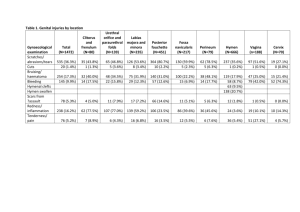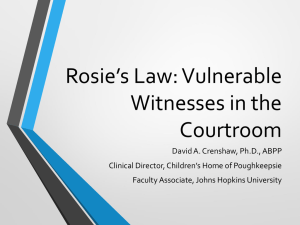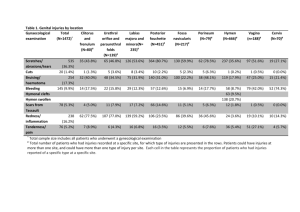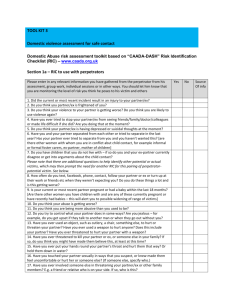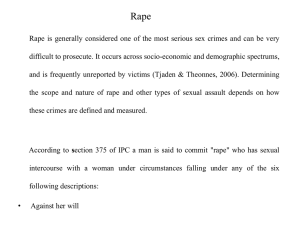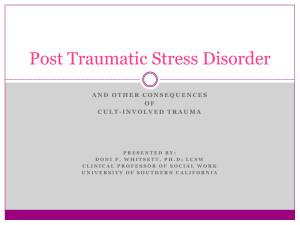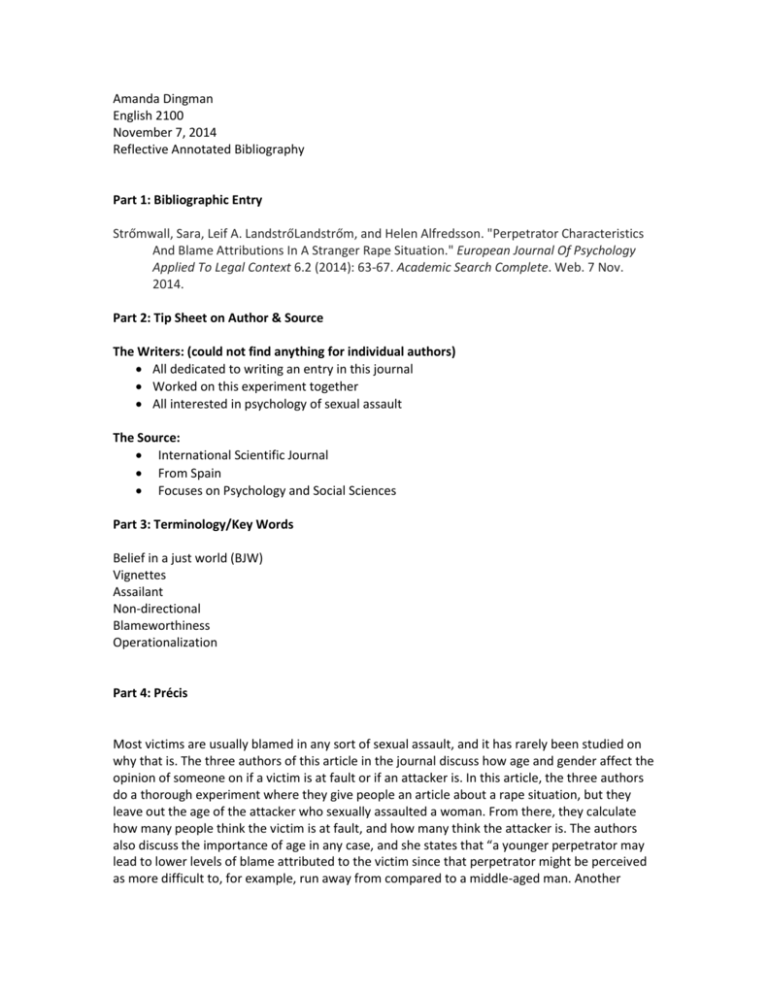
Amanda Dingman
English 2100
November 7, 2014
Reflective Annotated Bibliography
Part 1: Bibliographic Entry
Strőmwall, Sara, Leif A. LandstrőLandstrőm, and Helen Alfredsson. "Perpetrator Characteristics
And Blame Attributions In A Stranger Rape Situation." European Journal Of Psychology
Applied To Legal Context 6.2 (2014): 63-67. Academic Search Complete. Web. 7 Nov.
2014.
Part 2: Tip Sheet on Author & Source
The Writers: (could not find anything for individual authors)
All dedicated to writing an entry in this journal
Worked on this experiment together
All interested in psychology of sexual assault
The Source:
International Scientific Journal
From Spain
Focuses on Psychology and Social Sciences
Part 3: Terminology/Key Words
Belief in a just world (BJW)
Vignettes
Assailant
Non-directional
Blameworthiness
Operationalization
Part 4: Précis
Most victims are usually blamed in any sort of sexual assault, and it has rarely been studied on
why that is. The three authors of this article in the journal discuss how age and gender affect the
opinion of someone on if a victim is at fault or if an attacker is. In this article, the three authors
do a thorough experiment where they give people an article about a rape situation, but they
leave out the age of the attacker who sexually assaulted a woman. From there, they calculate
how many people think the victim is at fault, and how many think the attacker is. The authors
also discuss the importance of age in any case, and she states that “a younger perpetrator may
lead to lower levels of blame attributed to the victim since that perpetrator might be perceived
as more difficult to, for example, run away from compared to a middle-aged man. Another
reason why a young perpetrator may lead to lower levels of victim blame is that a young
perpetrator is seen as less responsible and acts out of “youthful stupidity" compared to a
middle-aged man who should be much more mature and able to both appreciate the integrity of
the female victim and to control himself” (64). The author also talks about how “Men blamed
the victim more and women blamed the victim less when the perpetrator had a previous
conviction. Women blamed the perpetrator more and men less when the perpetrator had a
previous conviction” (63). This shows that gender can also affect who people decide is
responsible in any sexual assault.
Part 5: Reflection
Reading further into this topic, I really agree with these authors. At first, my opinion was just
that I believed that a rape victim is never at fault, and I still believe that, but some factors do
affect it, I guess. I mean, if a man follows you home and rapes you, then of course that is never
the victims fault, but if you’re conscious and you don’t try to do anything to stop anything from
happening, then it is sort of also not your fault, but not necessarily your fault altogether. That
type of person should never be charged, because he already suffered enough by being raped,
but he is still sort of also at fault for letting it happen to him. Also, if a person is only convicting
an innocent person for raping him, then that person is definitely responsible for falsely stating
that a victim has raped him when that never occurred. I also thought the age thing was very
appropriate, and I’d never thought about it like that before.
Part 6: Quotables
“Men blamed the victim more and women blamed the victim less when the perpetrator had a
previous conviction. Women blamed the perpetrator more and men less when the perpetrator
had a previous conviction” (63).
“A younger perpetrator may lead to lower levels of blame attributed to the victim since that
perpetrator might be perceived as more difficult to, for example, run away from compared to a
middle-aged man. Another reason why a young perpetrator may lead to lower levels of victim
blame is that a young perpetrator is seen as less responsible and acts out of “youthful stupidity"
compared to a middle-aged man who should be much more mature and able to both appreciate
the integrity of the female victim and to control himself” (64).
“Rape has serious consequences for the victim. Apart from the trauma of the rape itself, rape
victims are sometimes (more or less) blamed for the rape, which leads to secondary
victimization. Blame reactions from family, friends, and the media can enhance feelings of selfblame, commonly experienced by rape victims. Self-blame negatively affects the victim’s
chances of recovery and make victims less prone to report the incident to the police” (63).


